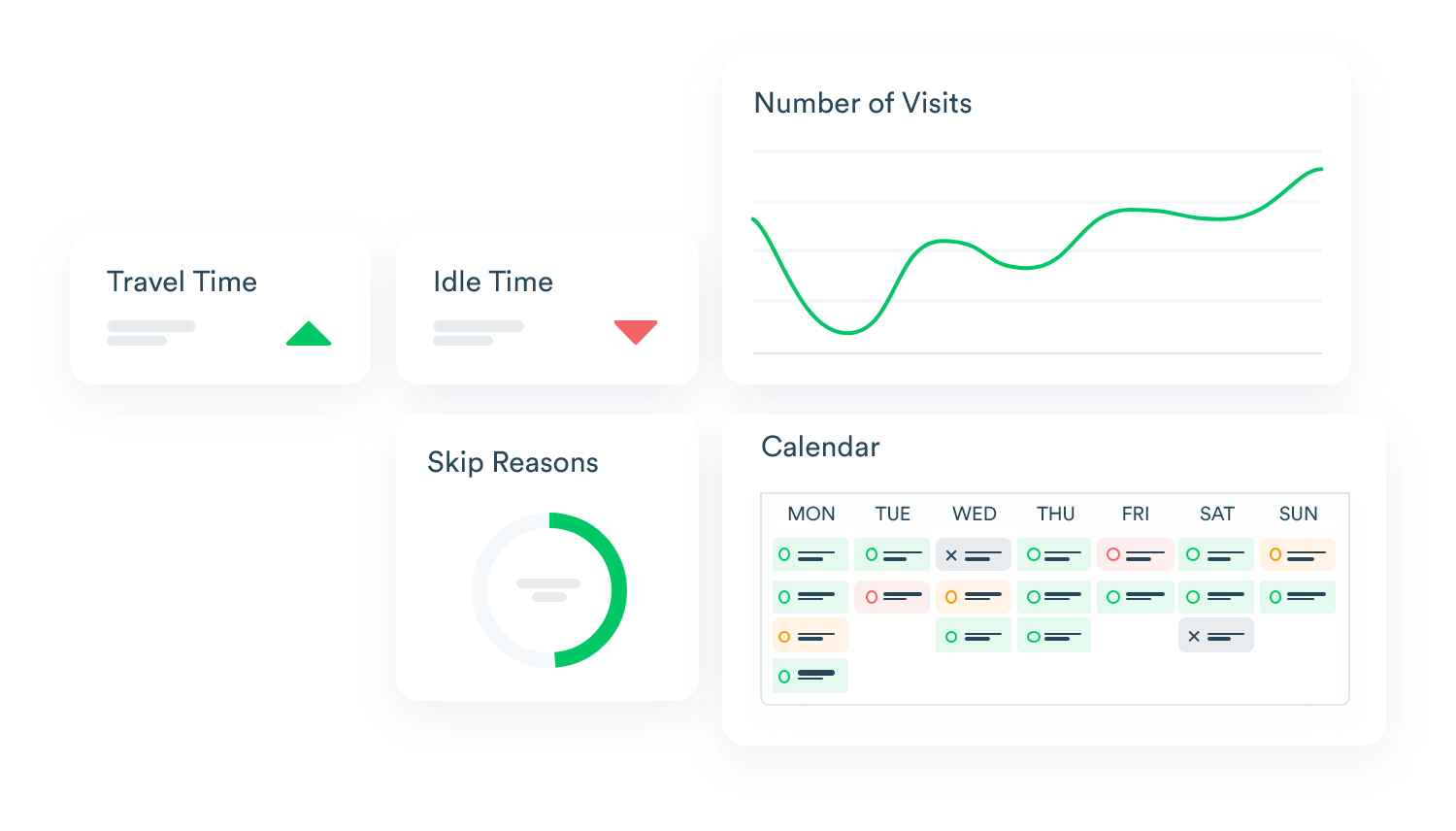In today’s data-centric world, market research has evolved far beyond traditional methods which can no longer keep-up with the pace of change. The advent of big data and advanced analytics has revolutionized how businesses gather and interpret market insights leveraging the power of information with the speed and convenience of technology.
Data-driven market research collects vast amounts of data to provide actionable insights that inform strategic decision-making. By harnessing the power of data, businesses can stay ahead of trends, and drive sustainable growth by adapting to the ever-changing needs and trends.
Retail execution solutions have many benefits, but allowing businesses to centralize on data-driven market research is what we’ll focus on in this article. This approach allows businesses to better understand consumer behavior, market trends, and competitive landscapes, ultimately driving growth and profitability.
Importance of Market Research in the Digital Age
In the digital age, the most valuable resource is data. And no wonder that the market research industry is estimated to generate 118 billion annually. However, businesses are inundated with data of all forms and from various sources including social media, customer feedback, sales transactions, and web analytics. With such an abundance of information available at our fingertips, businesses must learn to extract value from this data to remain competitive.
Businesses are often looking for answers for the things that matter to their success, this can take the form of identifying consumer trends and preferences, optimizing product offerings and pricing strategies, enhancing customer experiences and improving marketing effectiveness.
With such information at hand, businesses can understand what they have to do to solve the challenges ahead of them and to drive adaptation and innovation as needed for continuous growth and profit.
Harnessing all the insights through data-driven market research is crucial for several reasons: It enhances decision-making and enables managers to make informed decisions based on empirical evidence rather than intuition or guesswork. It also Improves customer understanding highlighting demographics, purchasing habits and pain-points and allows a customized crafting of personalized experiences. To sum it up, data-driven market research helps businesses benchmark against competitors and identify gaps in the market allowing them to improve and find ways to stay ahead.
How Data-Driven Insights Can Benefit Various Departments
Data-driven insights are not just for the marketing team—they can benefit various departments within a business:
Sales Managers
Sales managers can use data-driven market research to identify high-potential leads, understand customer pain points, and develop targeted sales strategies to optimize their performance. By leveraging data, they can improve sales forecasts, set accurate targets and allocate resources more effectively.
Marketing Managers
Marketing managers can gain a deeper understanding of their target audience, optimize and tailor campaigns to specific customer segments, and measure ROI more accurately. Data-driven insights help in identifying the most effective channels and messages, leading to higher engagement and conversion rates while measuring campaign effectiveness and adjusting tactics in real-time.
Merchandising Managers
Merchandising managers can analyze consumer behavior and preferences to detect emerging product trends and respond proactively. They can also make data-driven decisions about product assortment, placement, and promotions. This leads to better inventory management based on demand forecasting and results in increased sales.
IT Managers
IT managers play a crucial role in enabling data-driven market research by ensuring the right tools and infrastructure are in place. They can also help in data integration and security, ensuring that insights are accessible and reliable specially when it comes to large datasets.
Common Data Sources and Tools for Market Research
To unlock the full potential of data-driven market research, businesses need to tap into various data sources to get the relevant data points. The most common and useful sources are:
- Customer Surveys: Gather direct feedback from customers about their experiences and preferences. Collect direct feedback from customers about their preferences and experiences.
- Social Media: Analyze social media presence and interactions to understand customer sentiment and to identify trends.
- Web Analytics: Track and analyze website traffic, pages visited, visit duration and heatmaps to identify user behavior and preferences and to follow the flow of successful conversions.
- Sales Data: Use sales and transactions data to identify purchasing patterns and trends in consumer behavior as well as product seasonality and performance.
- Mystery Shopping: Employ mystery shoppers to evaluate retail execution, operational efficiency, customer service and experience.
To leverage the data gathered from these sources the right tools are necessary. While we do have our preferences, here are some internationally trusted tools for data management:
- Shelvz: Yes, we’re getting biased on this one but we can’t help but let you know how awesome our solution is at handling your retail data.
- Google Analytics: A powerful web analytics tool to track and analyze website performance.
- IBM Watson: An AI-powered platform for advanced data analytics and insights.
- Tableau: A data visualization tool that helps in creating interactive dashboards and reports.
- SPSS: A statistical analysis software suite for analyzing survey data and other datasets.
- HubSpot: A comprehensive platform for inbound marketing, sales, and customer service.
Steps to Implementing a Data-Driven Market Research Strategy
Implementing a data-driven market research strategy involves several key steps:
- Define Objectives: Clearly outline the goals and objectives of your market research efforts. What specific insights are you seeking? How will they inform your business decisions?
- Identify Data Sources: Determine which data sources will provide the most relevant and useful information for your objectives. This could include internal data, third-party data, or a combination of both.
- Collect and Clean Data: Gather data from the identified sources and ensure its accuracy and completeness (choosing the right tools will help here). Besides data collection, think of cleaning which involves removing duplicates, correcting errors, and standardizing formats.
- Analyze Data: Use analytical tools and techniques to uncover patterns, trends, and correlations within the data. This step may involve statistical analysis, data visualization, and machine learning algorithms.
- Interpret Findings: Translate the analytical results into actionable insights and into a language that is easy to understand across all involved departments. Consider how these findings align with your business goals and what strategic actions they suggest.
- Implement Actions and Monitor Results: Apply the insights to make data-driven decisions and implement changes in your business strategy. Remember, the data alone is not enough, action is needed.
- Monitor and Adjust: Continuously monitor the outcomes to assess the effectiveness and make necessary adjustments to your strategy and operations.
Challenges and Future Trends in Data-Driven Market Research
Despite its numerous benefits, data-driven market research also presents some challenges that require some attention. The most notable ones are:
- Data Privacy and Security: Ensuring compliance with data protection regulations is crucial to maintaining customer trust and operations running smoothly.
- Data Quality: The accuracy and reliability of data can impact the validity of insights. Businesses must invest in data quality management processes.
- Integration of Data Sources: Combining data from disparate sources can be complex and time-consuming. Effective data integration requires robust infrastructure and skilled personnel.
- Technology Changes: Keeping up with rapidly evolving technologies and tools requires continuous investment both in financial and human resources.
Future Trends
- AI and Machine Learning: Advanced AI and machine learning algorithms will enhance the predictive capabilities of market research, enabling more accurate forecasts and personalized recommendations.
- Real-Time Analytics: The demand for real-time insights will drive the adoption of technologies that provide instant analysis and reporting.
- Increased Use of IoT Data: The Internet of Things (IoT) will generate vast amounts of data that can be harnessed for market research, offering deeper insights into consumer behavior and product usage.
- Personalization: Enhanced focus on personalized experiences driven by data insights will keep leading the way technology and business development will continue further on.
Conclusion: The Value of Data-Driven Insights for Sustainable Growth
In conclusion, data-driven market research is a powerful tool for businesses looking to thrive in the digital age. By leveraging data to uncover actionable insights, companies can make informed decisions, optimize operations, and drive sustainable growth.
All sorts of decision makers from various departments, be it sales, merchandising, marketing or even IT can benefit from the new opportunities unlocked through data-driven market research to propel their organizations forward.
Ready to unlock the power of data-driven market research yourself? Start by implementing the steps outlined in this guide, and book a demo with us to watch your business grow.



